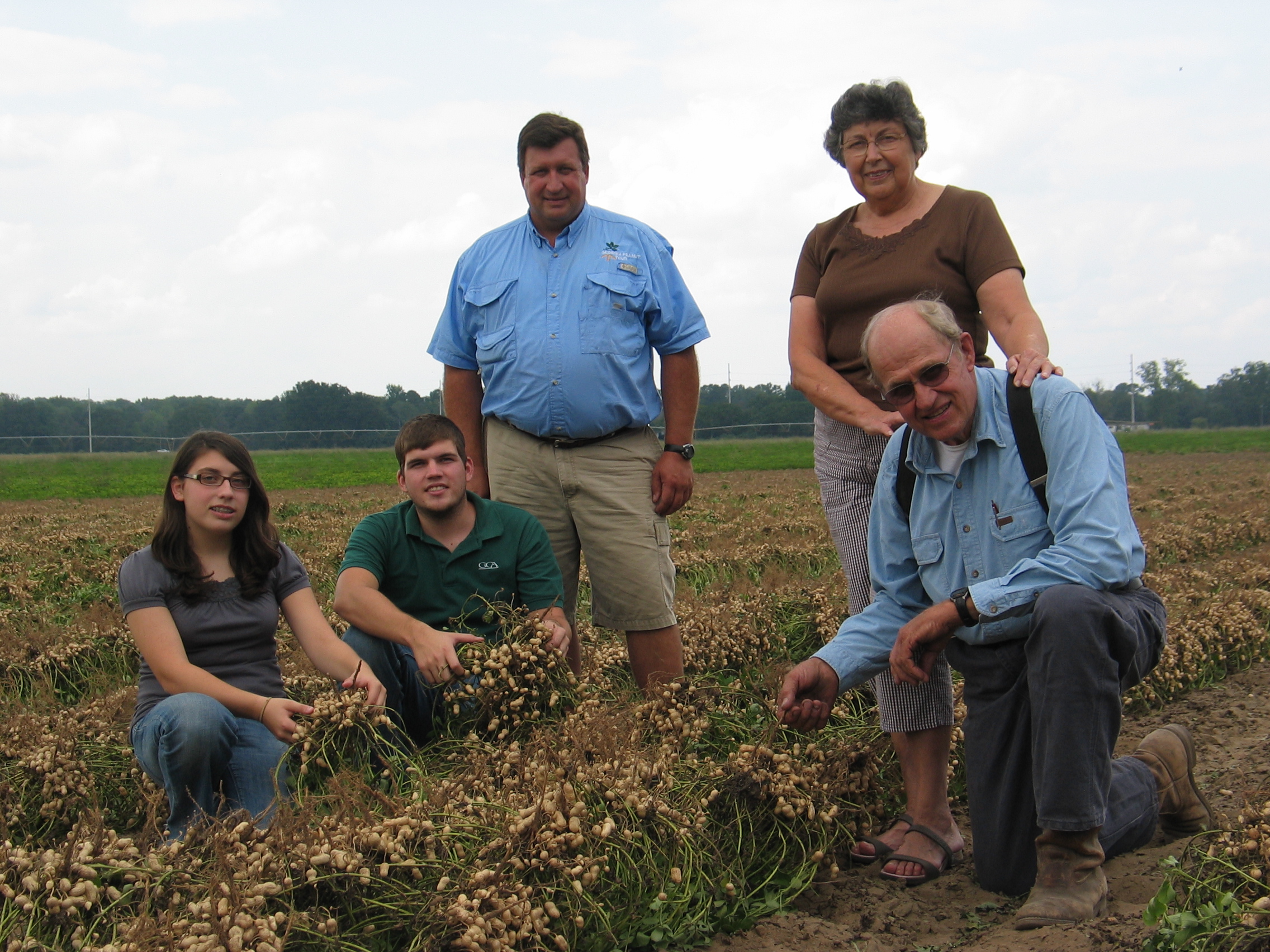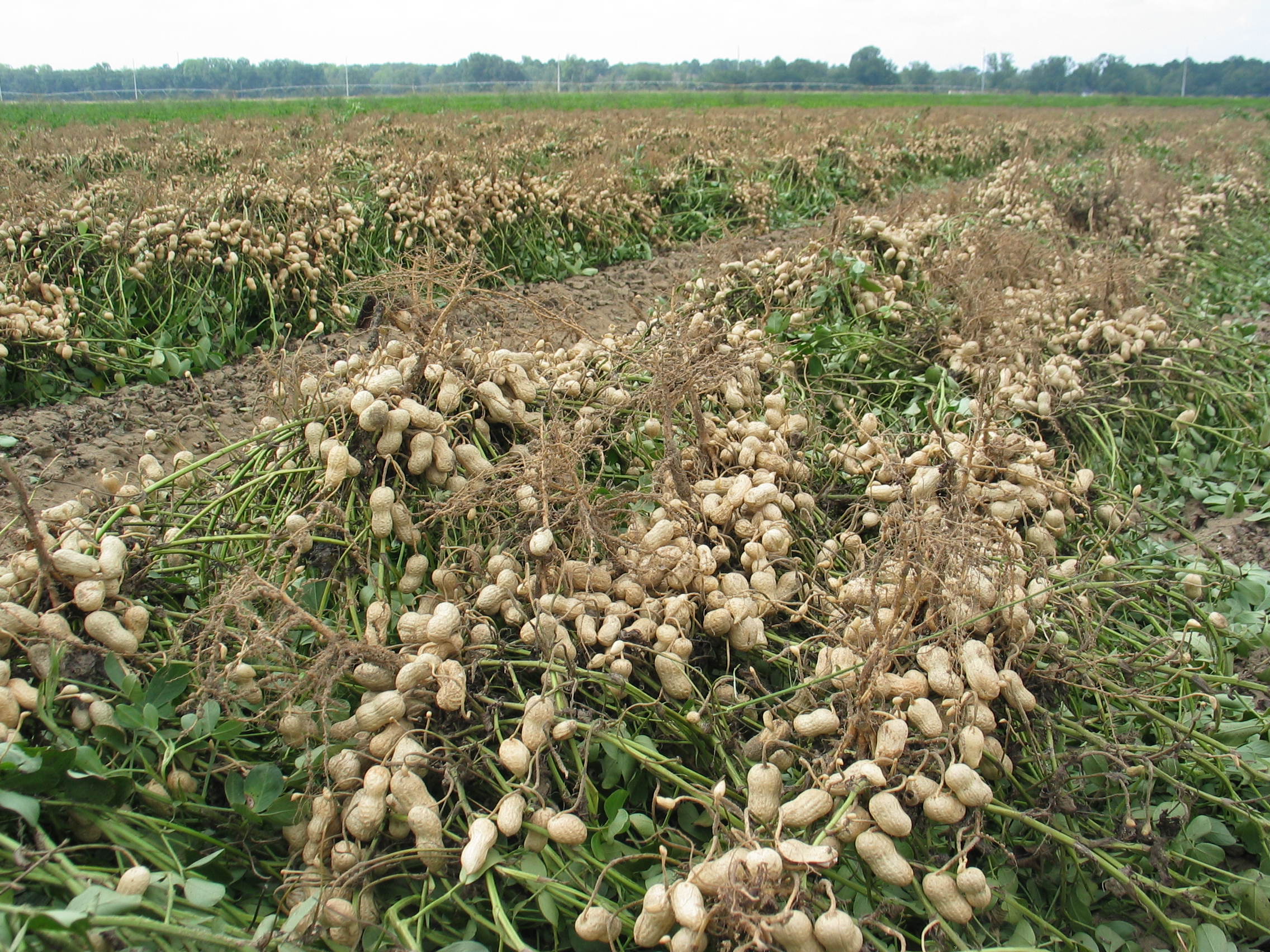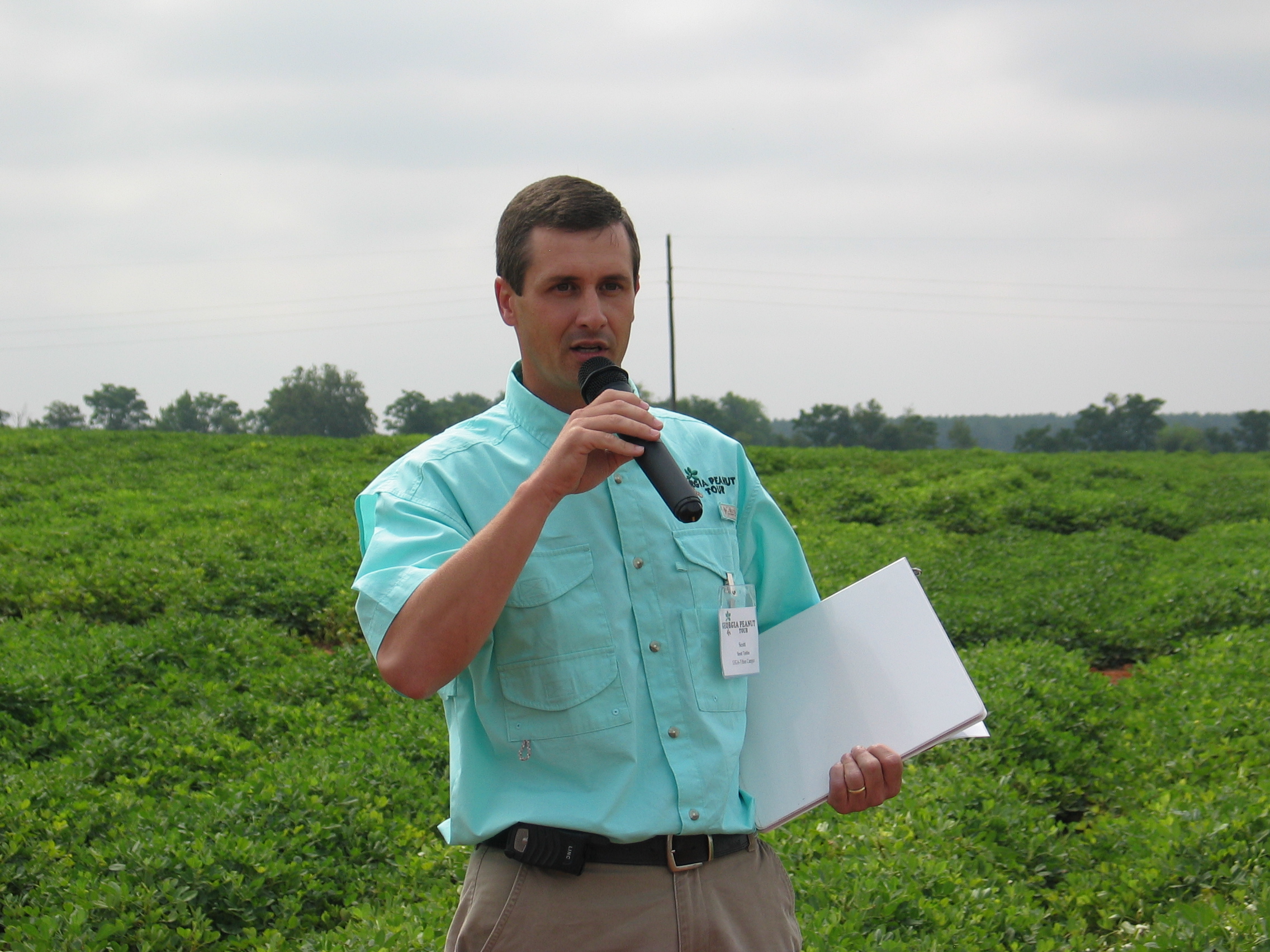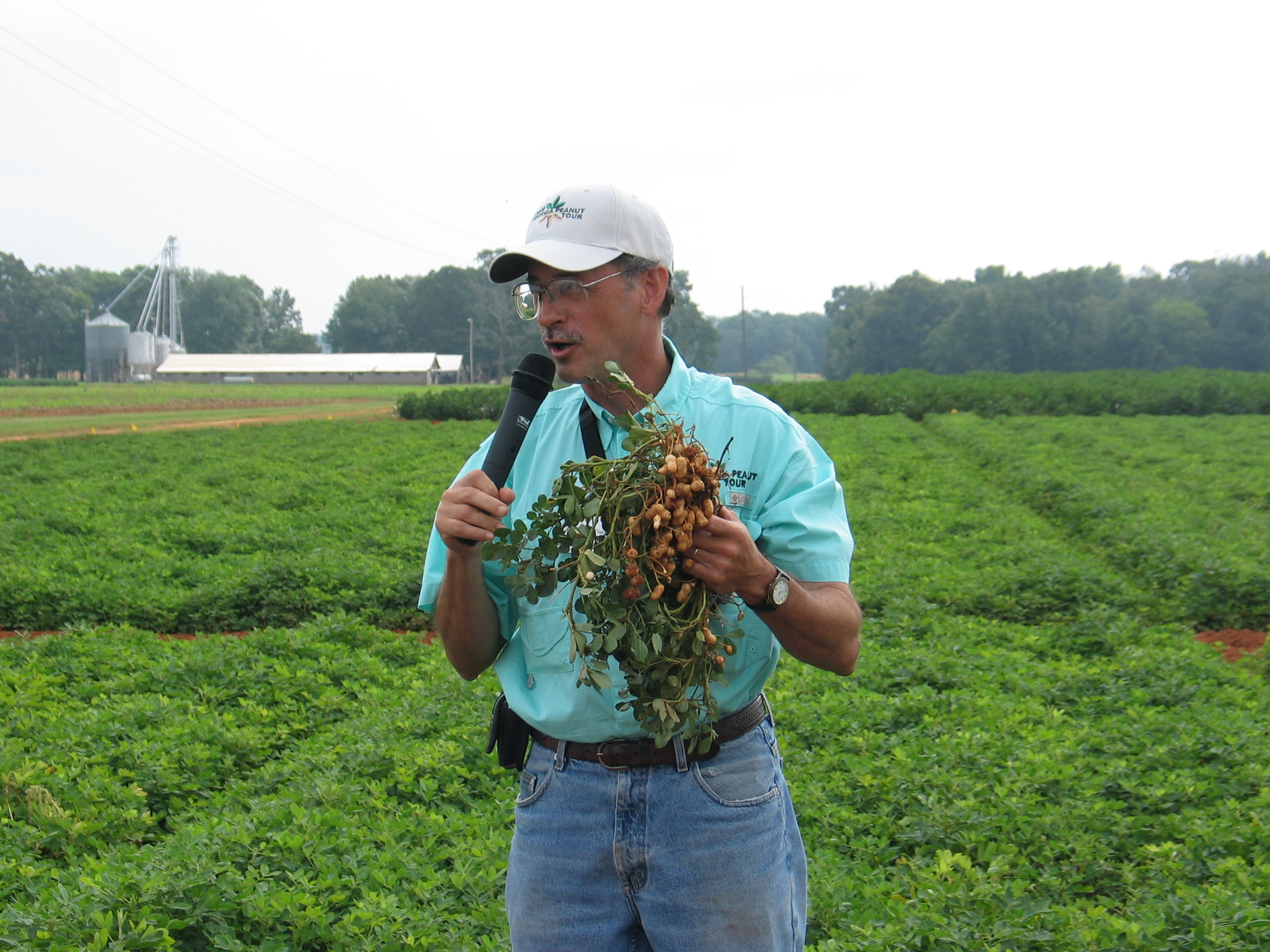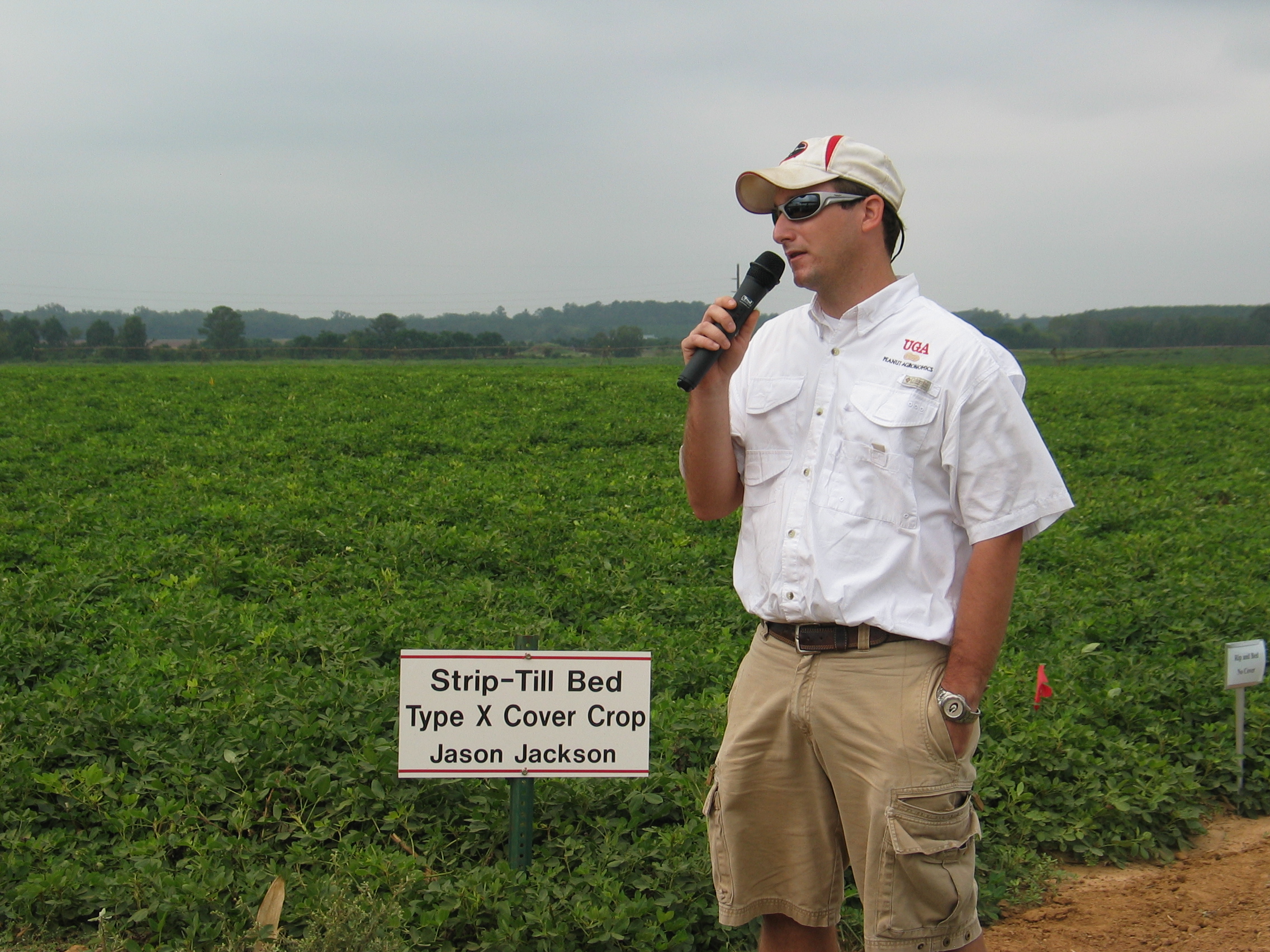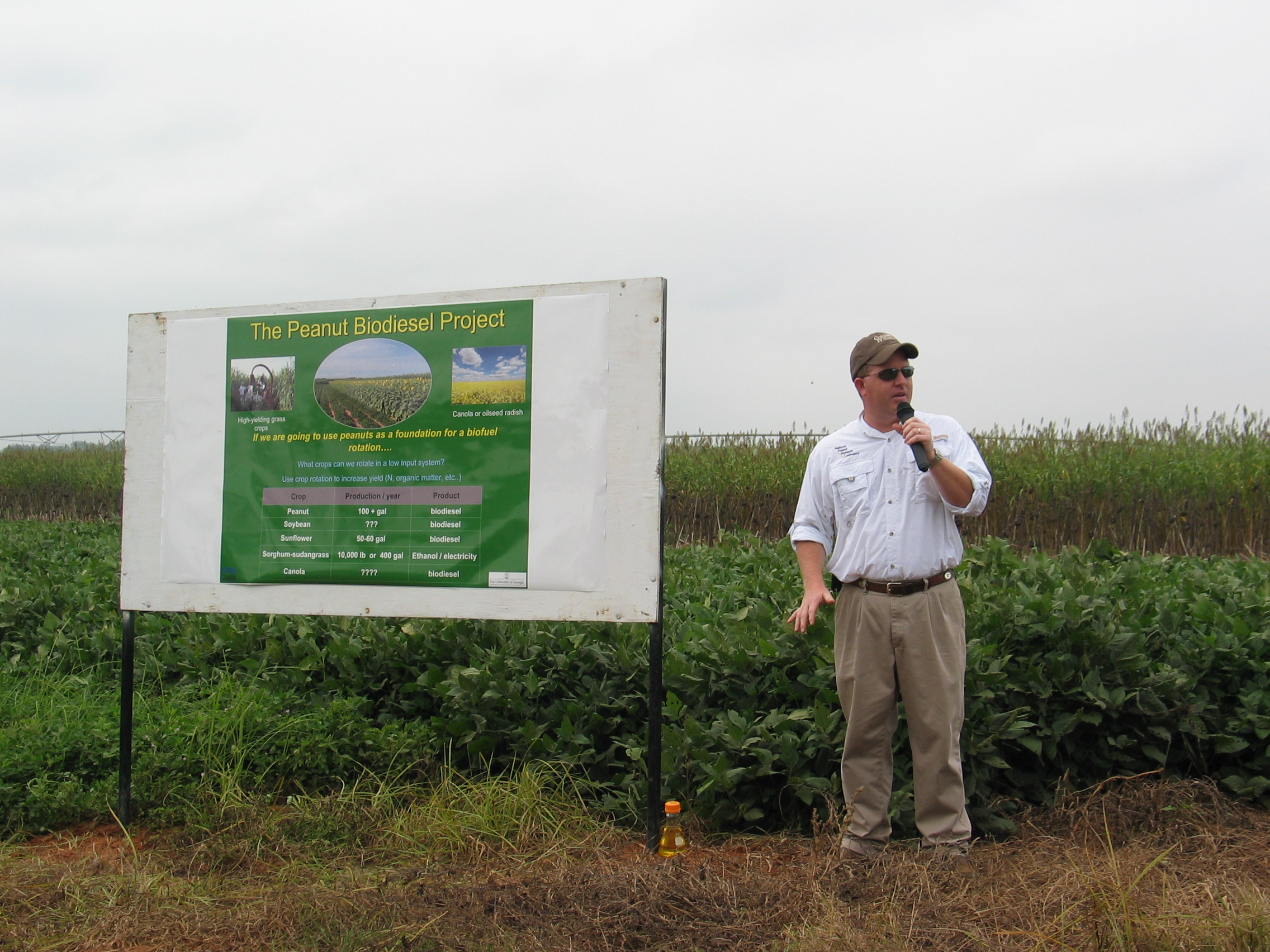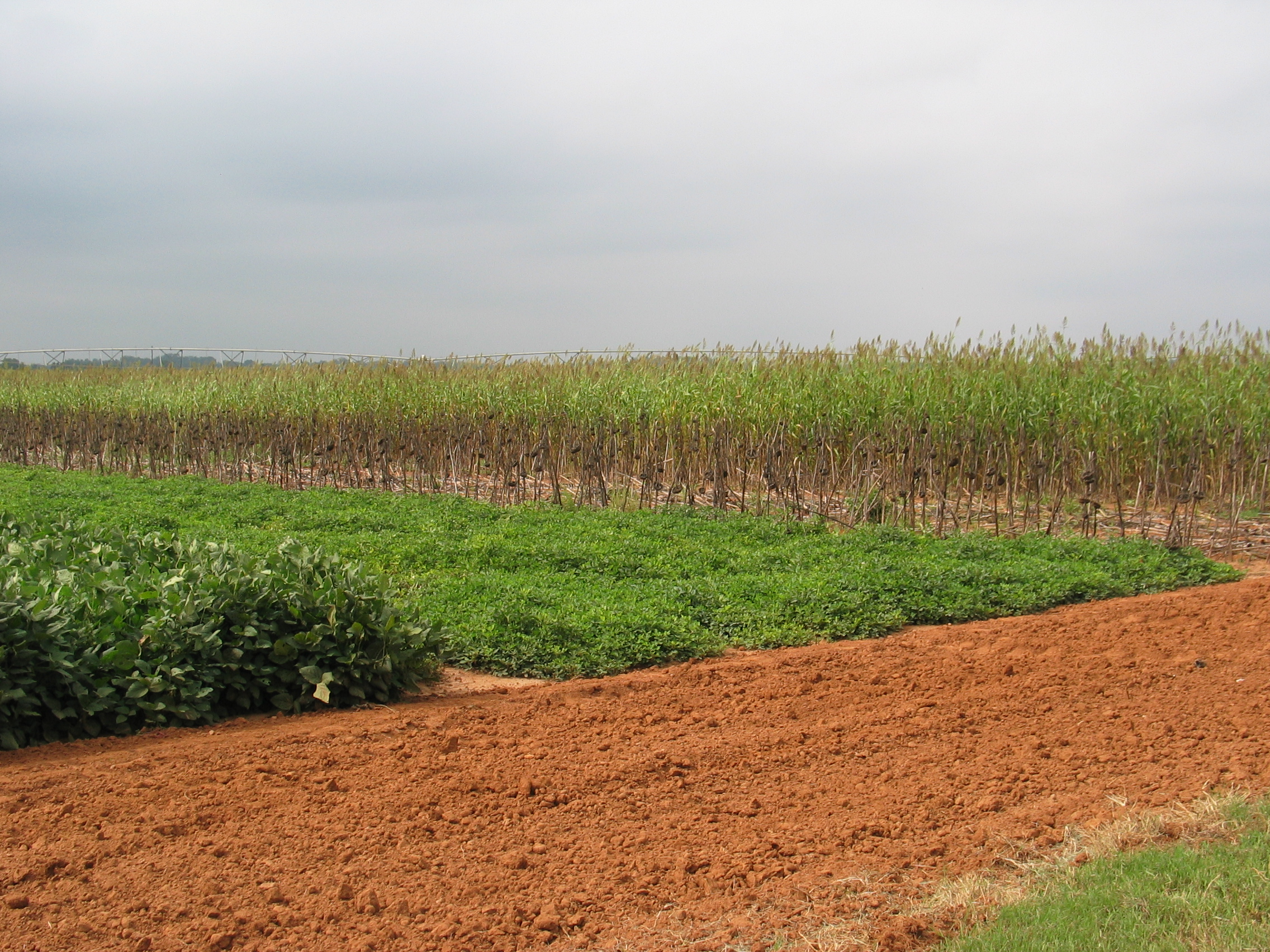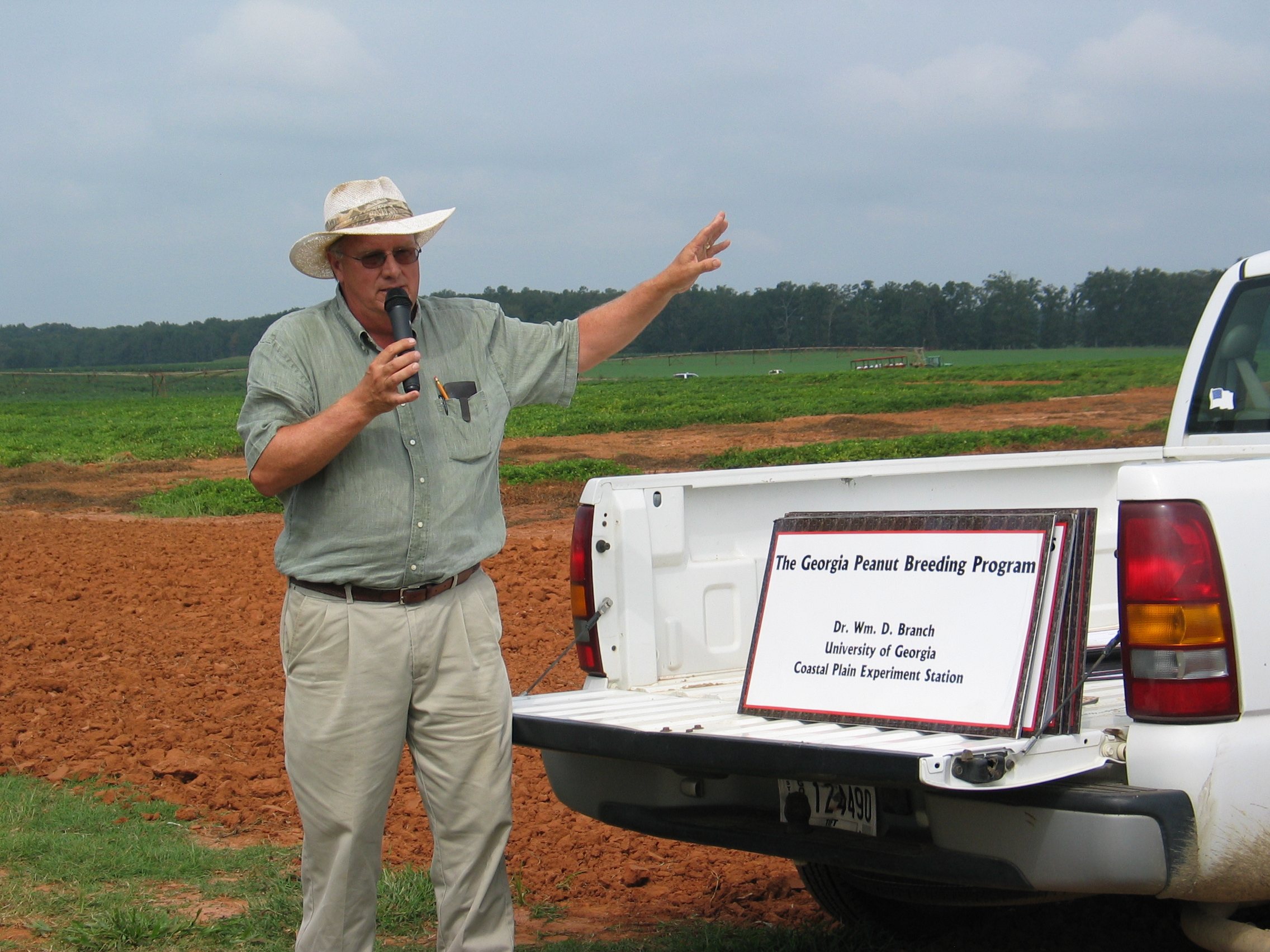 Bill Branch, University of Georgia peanut breeder, discussed the Georgia Peanut Breeding Program to tour attendess while at the Southwest Georgia Research & Education Center in Plains, Ga. The Georgia Peanut Breeding Program is actively involved in the development of improved varieties with desirable traits for increasing dollar value, yield, grade, drought tolerance, better shelling characteristics, longer shelf-life, enhanced flavor, nutritional qualities as well as disease, insect, virus, nematode and aflatoxin resistance. Peanut breeding is a long-term commitment which normally takes 10 years to develop a new variety. Thus, peanut varieties for this new millennium are currently being considered. The most recent varietal releases from the Georgia Peanut Breeding Program have been Georgia Green, Georgia-01R, Georgia-02C, Georgia-03L, Georgia-06G, Georgia Greener, Georgia-07W, Georgia Hi-O/L, Georgia-05E, Georgia-04S, Georgia Browne, Georgia Valencia and Georgia Red. To learn more about each of these varieties, click here to read an article by Dr. Branch that includes a description of each variety.
Bill Branch, University of Georgia peanut breeder, discussed the Georgia Peanut Breeding Program to tour attendess while at the Southwest Georgia Research & Education Center in Plains, Ga. The Georgia Peanut Breeding Program is actively involved in the development of improved varieties with desirable traits for increasing dollar value, yield, grade, drought tolerance, better shelling characteristics, longer shelf-life, enhanced flavor, nutritional qualities as well as disease, insect, virus, nematode and aflatoxin resistance. Peanut breeding is a long-term commitment which normally takes 10 years to develop a new variety. Thus, peanut varieties for this new millennium are currently being considered. The most recent varietal releases from the Georgia Peanut Breeding Program have been Georgia Green, Georgia-01R, Georgia-02C, Georgia-03L, Georgia-06G, Georgia Greener, Georgia-07W, Georgia Hi-O/L, Georgia-05E, Georgia-04S, Georgia Browne, Georgia Valencia and Georgia Red. To learn more about each of these varieties, click here to read an article by Dr. Branch that includes a description of each variety.
Georgia Seed Development Commission
2008 Georgia Peanut Tour Photo Album

